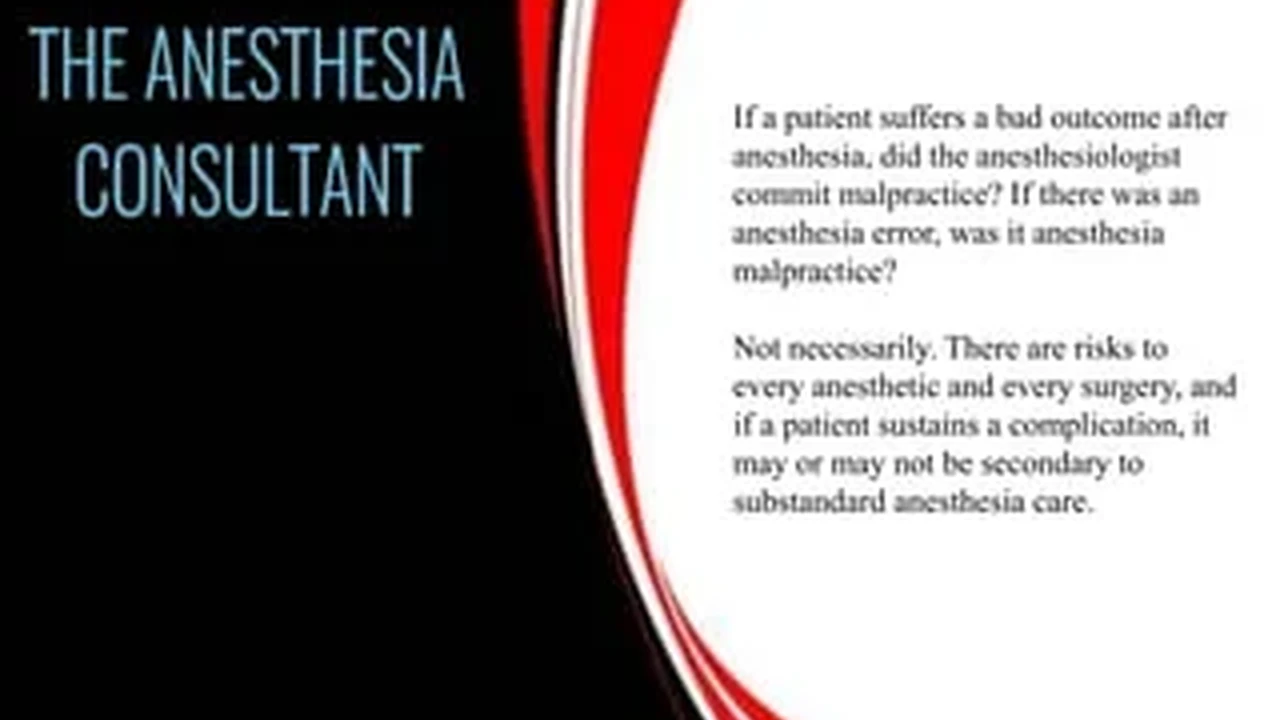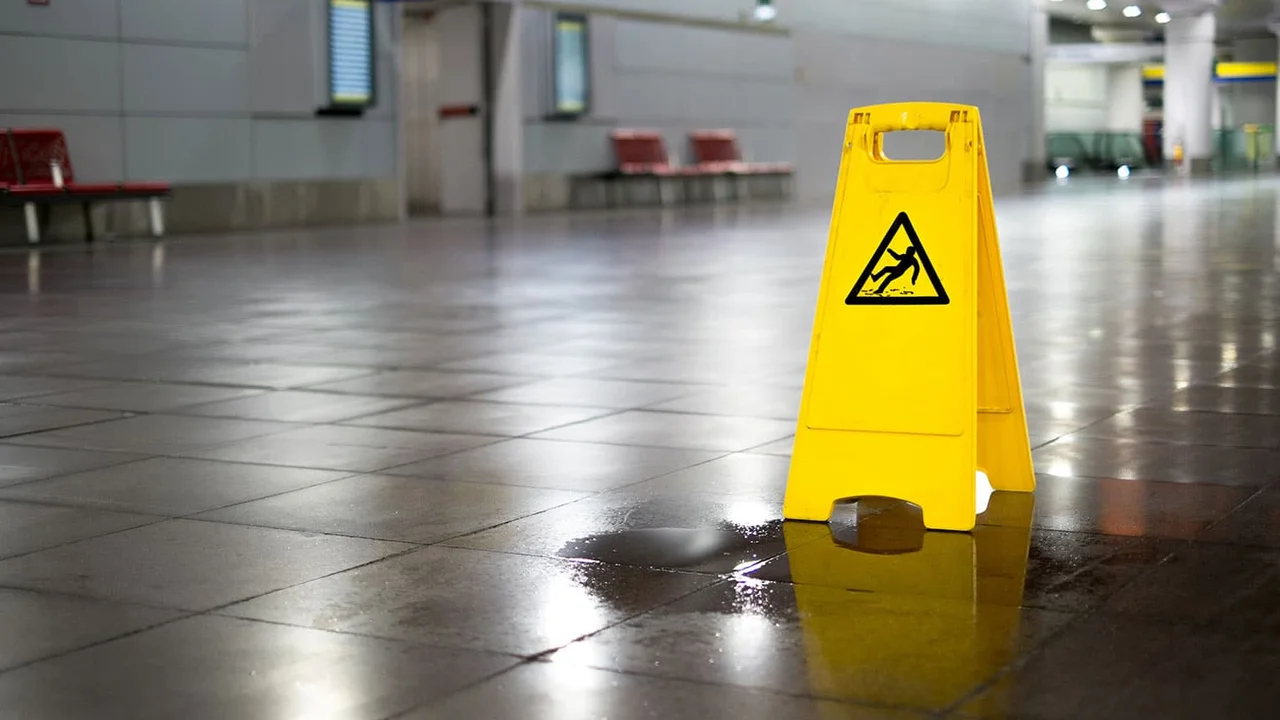Anesthesia Error Malpractice Lawsuits
Insights into personal injury lawsuits stemming from anesthesia errors during medical procedures.

Anesthesia Error Malpractice Lawsuits
Hey there! Let's talk about something pretty serious but super important: anesthesia errors during medical procedures. Nobody goes into surgery expecting things to go wrong, especially not with the anesthesia. But unfortunately, it does happen, and when it does, the consequences can be devastating. If you or a loved one has suffered due to an anesthesia error, you might be looking at a personal injury lawsuit. It's a complex area of law, but understanding the basics can really help you navigate what comes next.
Understanding Anesthesia Malpractice What Went Wrong
So, what exactly constitutes an anesthesia error? It's not just about waking up during surgery (though that's definitely a serious error!). Anesthesia malpractice can involve a whole range of mistakes made by an anesthesiologist, nurse anesthetist, or even other medical staff involved in administering or monitoring anesthesia. These errors can occur before, during, or after a surgical procedure. Think about it: the anesthesiologist is responsible for keeping you pain-free and stable throughout the surgery, and that's a huge job with a lot of moving parts.
Common types of anesthesia errors include:
- Administering too much or too little anesthesia: Too much can lead to brain damage, coma, or even death. Too little can result in 'anesthesia awareness,' where the patient is conscious during surgery but unable to move or speak – a truly terrifying experience.
- Failure to properly monitor the patient: Anesthesiologists need to constantly watch vital signs like heart rate, blood pressure, and oxygen levels. Missing critical changes can lead to serious complications.
- Failure to intubate properly: This can lead to oxygen deprivation, which can cause brain damage.
- Using defective equipment: Sometimes, the equipment itself might be faulty, leading to issues with anesthesia delivery.
- Allergic reactions: Failing to check a patient's medical history for allergies to anesthetic agents can have severe consequences.
- Delayed or improper response to complications: Even if a complication arises, the anesthesiologist's timely and correct response is crucial.
The Impact of Anesthesia Errors Long Term Effects and Damages
The fallout from an anesthesia error can be life-altering. We're not just talking about a bad headache here. Depending on the severity of the error, patients can suffer from:
- Brain damage, leading to cognitive impairments, memory loss, or even a vegetative state.
- Spinal cord injuries, resulting in paralysis.
- Nerve damage, causing chronic pain or loss of function.
- Heart attack or stroke.
- Coma.
- Wrongful death.
- Psychological trauma, especially from anesthesia awareness.
When you're pursuing a personal injury lawsuit for an anesthesia error, you're essentially seeking compensation for all these damages. This can include medical expenses (past and future), lost wages, pain and suffering, emotional distress, and loss of enjoyment of life. In wrongful death cases, families can seek compensation for funeral expenses, loss of companionship, and financial support.
Navigating the Legal Maze Finding the Right Lawyer
Medical malpractice cases, especially those involving anesthesia, are notoriously difficult. They require a deep understanding of both medicine and law. That's why finding the right personal injury lawyer is absolutely critical. You need someone who specializes in medical malpractice, has a proven track record, and isn't afraid to go up against big hospitals and insurance companies.
When you're looking for a lawyer, consider these points:
- Experience: How many anesthesia error cases have they handled? What were the outcomes?
- Medical Expertise: Do they work with medical experts? Anesthesia cases often require expert testimony to prove negligence.
- Resources: These cases can be expensive to litigate. Does the firm have the financial resources to take on a complex case?
- Communication: Do you feel comfortable talking to them? Do they explain things clearly?
A good lawyer will help you gather all the necessary medical records, consult with medical experts to establish the standard of care and how it was breached, and build a strong case to prove negligence and causation.
The Process of an Anesthesia Malpractice Lawsuit What to Expect
So, what does the whole legal process look like? It's not a quick fix, that's for sure. Here's a general overview:
- Initial Consultation: You'll meet with a lawyer to discuss your case. Bring all relevant medical records you have.
- Investigation: The lawyer will conduct a thorough investigation, gathering more medical records, consulting with medical experts, and determining if there's a viable case. This can take a significant amount of time.
- Filing the Lawsuit: If there's a strong case, your lawyer will file a formal complaint against the responsible parties (e.g., the anesthesiologist, hospital, or clinic).
- Discovery: This phase involves exchanging information between both sides. This includes depositions (sworn testimonies), interrogatories (written questions), and requests for documents.
- Mediation/Settlement Negotiations: Many cases settle out of court. Your lawyer will negotiate with the defense to try and reach a fair settlement.
- Trial: If a settlement can't be reached, the case will go to trial. This is where both sides present their arguments and evidence to a judge or jury.
- Appeal: If either side is unhappy with the trial's outcome, they may appeal the decision.
The statute of limitations is super important here. This is the time limit within which you must file your lawsuit. It varies by state in the USA and by country in Southeast Asia, but generally, it's a few years from the date of the injury or when you reasonably discovered the injury. Don't delay in contacting a lawyer, as missing this deadline can mean losing your right to sue.
Specific Anesthesia Monitoring Equipment and Its Role in Safety
Let's dive a bit into the tech side of things, because proper monitoring equipment is absolutely crucial in preventing anesthesia errors. Anesthesiologists rely on a suite of devices to keep tabs on a patient's vital signs. When these devices are faulty, improperly used, or not monitored diligently, that's where problems can arise. Here are some key pieces of equipment and why they matter:
Capnography Monitors Ensuring Proper Breathing
Capnography is a big deal. It measures the concentration of carbon dioxide in exhaled breath. Why is this important? It tells the anesthesiologist if the patient is breathing effectively and if the breathing tube (if used) is correctly placed. A sudden drop or change in CO2 levels can indicate a problem with ventilation or circulation. For example, if the breathing tube is accidentally placed in the esophagus instead of the trachea, the capnograph will immediately show a lack of CO2, alerting the medical team to a critical error. Leading brands in this space include Philips Healthcare (with their IntelliVue series) and Masimo (known for their Root Patient Monitoring and Capnography). These devices typically range from $5,000 to $20,000 depending on features and integration capabilities. They are used in virtually all surgical settings where general anesthesia is administered.
Pulse Oximeters Monitoring Oxygen Levels
You've probably had one of these clipped to your finger. A pulse oximeter measures the oxygen saturation in your blood (SpO2) and your pulse rate. It's a non-invasive, continuous monitor that provides immediate feedback on how well a patient is being oxygenated. A drop in SpO2 can indicate respiratory depression or other serious issues. If an anesthesiologist fails to notice a significant drop in oxygen levels, it can lead to brain damage. Nellcor (Medtronic) and Masimo are dominant players here, offering highly accurate and reliable pulse oximetry. Basic handheld units might be a few hundred dollars, but integrated hospital-grade monitors can be several thousand, often bundled with other vital sign monitoring. They are essential in any procedure involving sedation or anesthesia.
Electrocardiogram ECG EKG Tracking Heart Activity
The ECG or EKG monitors the electrical activity of the heart. During anesthesia, a patient's heart rhythm can be affected by medications, stress, or underlying conditions. An ECG helps the anesthesiologist detect arrhythmias, ischemia, or other cardiac events that could be life-threatening. Continuous ECG monitoring is standard practice. Brands like GE Healthcare (with their B450/B650 monitors) and Mindray offer robust ECG monitoring capabilities, often integrated into multi-parameter patient monitors. These integrated systems can cost anywhere from $10,000 to $30,000. They are used in all surgeries and critical care settings.
Blood Pressure Monitors Keeping Tabs on Circulation
Blood pressure is another fundamental vital sign. Anesthesia can cause significant fluctuations in blood pressure, both high and low. Hypotension (low blood pressure) can reduce blood flow to vital organs, while hypertension (high blood pressure) can increase the risk of stroke or heart attack. Anesthesiologists use automated non-invasive blood pressure (NIBP) cuffs and sometimes invasive arterial lines for continuous, precise monitoring. Welch Allyn (Hillrom/Baxter) and Omron Healthcare are well-known for their blood pressure monitoring devices, both standalone and integrated. Integrated NIBP modules are part of most multi-parameter monitors. Standalone professional-grade NIBP monitors might be $500-$2,000, while integrated systems are part of the larger patient monitoring cost. Used in all procedures requiring anesthesia.
Temperature Monitors Preventing Hypothermia or Hyperthermia
Maintaining a patient's core body temperature is crucial during surgery. Anesthesia can interfere with the body's ability to regulate temperature, leading to hypothermia (low body temperature) or, less commonly, hyperthermia (high body temperature). Both can lead to complications like increased bleeding, cardiac events, and delayed recovery. Temperature probes are often placed on the skin or internally. 3M Bair Hugger (known for forced-air warming blankets) and Covidien (Medtronic) offer various temperature monitoring and management solutions. Temperature monitoring is typically integrated into patient monitors, with probes costing $50-$200. Used in most surgical procedures, especially longer ones.
Anesthetic Gas Monitors Ensuring Correct Dosage
For general anesthesia, patients inhale anesthetic gases. These monitors measure the concentration of anesthetic agents being delivered to the patient and the concentration being exhaled. This ensures the patient is receiving the correct dose to remain unconscious and pain-free, but not so much that it becomes toxic. It's a delicate balance. Brands like Dräger and GE Healthcare produce sophisticated anesthetic gas monitors, often integrated into their anesthesia machines. These are highly specialized devices, and the integrated anesthesia machines themselves can cost upwards of $50,000 to $100,000 or more. Exclusively used in operating rooms for general anesthesia.
Comparing Monitoring Systems Integrated vs Standalone
When it comes to patient monitoring in an operating room, hospitals often choose between integrated multi-parameter monitors and a collection of standalone devices. Each has its pros and cons:
Integrated Multi-Parameter Monitors The All-in-One Solution
Most modern operating rooms use integrated systems. These are single units that display all vital signs (ECG, SpO2, NIBP, capnography, temperature, etc.) on one screen. This makes it easier for the anesthesiologist to get a comprehensive view of the patient's status at a glance. They often have advanced alarm systems and data logging capabilities. Philips IntelliVue MX series, GE Healthcare B series, and Mindray BeneVision N series are prime examples. Their main advantage is convenience and streamlined data management. The downside can be the higher initial cost and the potential for a single point of failure if the entire unit malfunctions. Prices range from $15,000 to $50,000+ per unit, depending on configuration and features.
Standalone Devices Flexibility and Redundancy
Some facilities, or specific situations, might use individual standalone monitors for each vital sign. The advantage here is flexibility – you can mix and match brands, and if one device fails, the others continue to function. However, it can lead to a cluttered environment with multiple screens to watch, potentially increasing the risk of missing critical information. For example, a Masimo Radical-7 Pulse CO-Oximeter might be used alongside a separate Dräger Capnograph. The cost can be similar or even higher than integrated systems if you buy top-tier standalone units for every parameter, but it allows for more modular upgrades. These are less common in primary OR settings but might be seen in smaller clinics or for specific monitoring needs.
The Human Element Training and Protocols
Even with the best equipment, human error is still a factor. That's why proper training, adherence to protocols, and adequate staffing are just as important as the technology itself. Anesthesiologists and nurse anesthetists undergo extensive training, but continuous education and strict adherence to safety guidelines are paramount. Hospitals have protocols for equipment maintenance, pre-anesthesia checks, and emergency responses. When these protocols are ignored or when staff are inadequately trained, the risk of an anesthesia error skyrockets.
For instance, a pre-anesthesia checklist is a simple yet incredibly effective tool. It ensures that all equipment is working, medications are prepared, and the patient's history has been thoroughly reviewed. Skipping steps on this checklist can directly lead to preventable errors. Similarly, proper hand-off procedures between shifts are crucial to ensure continuity of care and prevent miscommunication about a patient's anesthetic plan or condition.
What to Do If You Suspect an Anesthesia Error Immediate Steps
If you suspect an anesthesia error has occurred, your immediate priority is your health. Seek appropriate medical care for any new or worsening symptoms. Once stable, here are some crucial steps:
- Document Everything: Keep detailed notes of what happened, when it happened, who was involved, and any symptoms you're experiencing.
- Preserve Medical Records: Request copies of all your medical records related to the procedure, including anesthesia records, nursing notes, and physician orders.
- Talk to Your Family: Discuss your concerns with trusted family members or friends who can support you and help remember details.
- Consult a Medical Malpractice Attorney: This is the most important step. A lawyer specializing in medical malpractice can evaluate your case, explain your legal options, and guide you through the complex process.
Remember, time is often of the essence due to statutes of limitations. Don't hesitate to seek legal advice if you believe you've been a victim of an anesthesia error. Your health and your rights are worth fighting for.
:max_bytes(150000):strip_icc()/277019-baked-pork-chops-with-cream-of-mushroom-soup-DDMFS-beauty-4x3-BG-7505-5762b731cf30447d9cbbbbbf387beafa.jpg)






